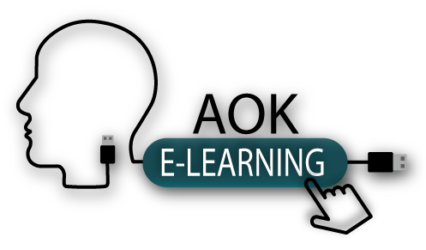Copyright law for ESL Websites in the U.S.
For students there are dozens of study-at-home English as a Foreign Language (EFL) websites. Educational providers and institutes such as universities and public libraries have an interest in suggesting the best of these sites to their students for Independent Language Learning (ILL). For teachers, these sites sometimes have good materials that they would like to use to supplement their classroom texts. This short paper will look at the legal use of English learning websites for students, institutions and teachers in the U.S., including ´fair use’ for teachers.
First, there are three types of learning sites or ‘three flavors’: free, partially free, and paid for. Usually, the more you pay to use a site, the fewer advertisements there are on it, but it’s important to know that some of the free sites have better information than some the paid ones.
In terms of the free material, the sites are made for individual, non-commercial use – individuals can study from the free sites without a problem. However, people are generally prohibited from using the sites for financial gain. On the other hand, educational institutions can organize and list good sites for their students for ILL purposes, but these sites must be publically listed, freely accessible, and not need a password.
Institutions are not able to copyright their list of Internet sites – these sites are of a public nature like the lists names in a telephone book. However, if the sites are annotated, the annotations fall under copyright law. Also, if you do link to a site, you should include the title page. (Pfaff-Harris, 1996)
Below are two examples of institutions providing lists of free English websites for their students to study from. Both lists are on the websites of these institutions and the individual sites are publically accessible through their own URLs, as well.
The entry from the New York Public Library, below, includes the library’s introduction and one of the annotated websites on their list. The list from Boston University includes six suggested sites for their students.
On the Internet one can find dozens of lists of websites from institutions, and also some lists which list these lists! Only the annotations are copyrighted, and this happens the moment that they’re published.
1. ‘At The New York Public Library’s Adult Learning Centers, where adults work on basic English and literacy skills, we’re often asked for recommendations of websites for adults to practice English at home. Below you’ll find eleven sites, some with a focus on listening, some on vocabulary, others on grammar, and some with a range of activities. Happy learning!’
‘11 Free Websites to Practice English at Home’, by Hilary
Schenker, November 28, 2012’
One example of an annotated website from H. Schenker´s list above is:
‘Easy World of English’
easyworldofenglish.com
‘An attractive, user-friendly website that includes grammar, pronunciation, reading and listening practice and an interactive picture dictionary’… (Schenker, 2012)
2. The following is an example from Boston University providing a list of free websites for its students to use in their studies:
Boston University Global Programs
Center for English Language & Orientation Programs
ESL Resources
ESL Activities
Multiple Skills
Interesting Things for ESL Students
BBC Guide to ESL Resources
Video Lessons on Real Life Topics
Interactive Online Lessons
Activities for English Practice
Lessons from the English Club…
(Boston University Global Programs Site, 5/2017)
What´s ‘Fair Use’ for Teachers?
There are strict copyright rules for teachers in the U.S.; however, teachers can copy any materials from the Internet that are in the public domain for their classes. It is recommended that if a teacher isn’t sure if some material is in the public domain, it´s best to contact the website director to find out. Also, it´s generally ok to copy a page from a website if you give credit to its writer. (Pfaff-Harris, 1996)
Below are two ‘fair use’ rules for teachers and the name of the article from which they came:
1. ‘Apart from those materials in the public domain, teachers can only use materials from the Internet or in paper form as a minor supplement to their paid for classroom materials such as textbooks.’
2. ‘Under ‘fair use’ rules, they (teachers) are allowed to make copies for all the students in their classes and they don´t need to ask permission because of time limitations, but they must reference the source of the materials and are not allowed to make multiple copies more than nine times in one semester.’
‘Fair use’ rules put a lot of limitations on teachers. To find out more about them, read ‘Copyright Law For Teachers: What You Need to Know’. (Casey, edited by: Wistrom, E. 2015).
Disclaimers
If teachers assemble a list of websites for their classes, it is recommended that the list comes with a disclaimer that they are not responsible for any of the information on any of the sites. The teachers can also say that upon notification, they will gladly try to fix any technical problem or remove any link which is not proper for readers.
Bibliography
Boston University Global Programs Site. (2017). Boston University Global Programs, Center for English Language & Orientation Programs, ESL Resources. Website: http://www.bu.edu/celop/people/for-current-students/esl-links/. (accessed 5/1/17)
Casey, edited by: Wistrom, E. (updated 2015). Copyright Law For Teachers: What You Need to Know. Bright Hub Education. Website: http://www.brighthubeducation.com/teaching-methods-tips/6623-understanding-copyright-law-and-fair-use-for-teachers/. (accessed 5/1/17)
Pfaff-Harris, K. (1996). Copyright Issues on the Web. The Internet TESL Journal, Vol. II, No. 10, October 1996. Website: http://iteslj.org/Articles/Harris-Copyright.html. (accessed 5/1/17)
Schenker, H. (2012). 11 Free Websites to Practice English at Home. New York Public Library Site. Website: https://www.nypl.org/blog/2012/11/28/11-great-free-websites-practice-english. (accessed 5/1/17)

